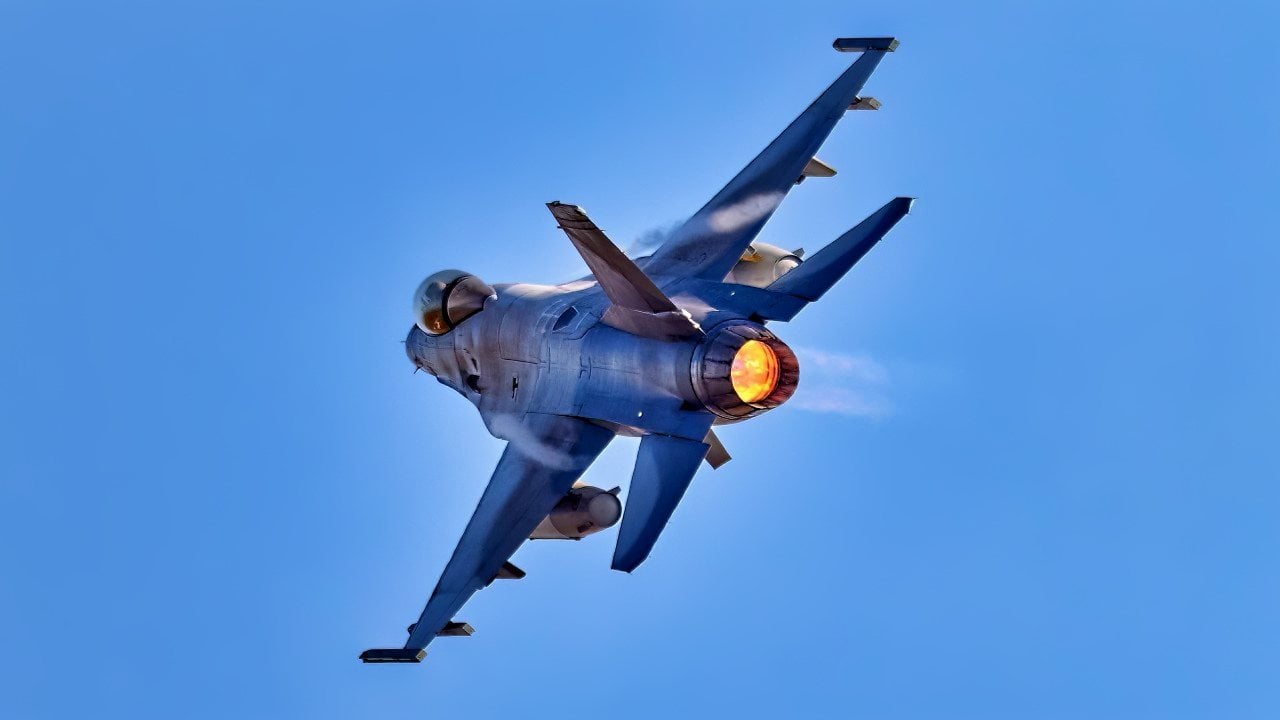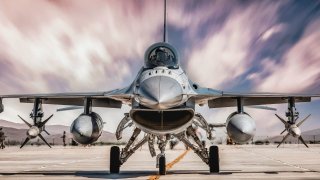U.S. Air Force Chief to Take a Seat in 'Self-Flying' F-16 Fighter Jet
Secretary of the Air Force Frank Kendall has no doubt logged quite a few miles in the air, even before he was appointed to head the Department of the Air Force. Now as the air services top civilian official, he will soon go boldly in the wild blue yonder in the cockpit of an autonomously piloted F-16 Fighting Falcon.
Secretary of the Air Force Frank Kendall has no doubt logged quite a few miles in the air, even before he was appointed to head the Department of the Air Force. Now as the air services top civilian official, he will soon go boldly in the wild blue yonder in the cockpit of an autonomously piloted F-16 Fighting Falcon.
The flight will provide Kendall a chance to get an up-close look at the Air Force's Collaborative Combat Aircraft program and see how the aircraft performs.
"I'm going to take a ride in an autonomously flown F-16 later this year," Kendall told members of the Senate Appropriations defense subcommittee during an April 9 budget hearing. "There will be a pilot with me who will just be watching, as I will be, as the autonomous technology works, and hopefully, neither he nor I will be needed to fly the airplane."
The U.S. Air Force will be modifying six of its F-16s to test autonomous tech and software at Eglin Air Force Base (AFB), Florida, as part of the Viper Experimentation and Next-gen Operations Model - Autonomy Flying Testbed (VENOM-AFT) program. The three fighters arrived at the base on April 1, and once transformed, the jets will begin autonomous testing.
Unmanned – Not Quite
The autonomous testing will be similar to that of self-driving cars – meaning that a human operator will be present at all times. In this case, during the tests, a pilot will be in the cockpit, but not just along for the ride. The human operator will be present to monitor the autonomy and ensure flight and mission systems test objectives are met, and if necessary to take over if there are any problems. Pilots will also retain control over specific algorithms during the flights.
The human pilot will also provide feedback during modeling, simulation, and post-flight to the autonomy developers to improve performance over time and ensure the autonomy is making the appropriate decisions before and during flight.

The Air Force has not announced when the F-16 modifications will be completed or when the aircraft might be ready to fly.
As previously reported, this initiative aims to explore autonomy in crewed and uncrewed aircraft, potentially revolutionizing future air combat by developing autonomous "loyal wingmen." While not intending to convert the entire fleet to autonomous fighters, these tests signify a step towards incorporating artificial intelligence in support of manned missions, aligning with broader efforts to enhance combat strategies with autonomous technologies.
The Collaborative Combat Aircraft (CCA) project calls for at least 1,000 unmanned aerial systems (UAS) to act as those loyal wingmen. The drones will be designed to deploy alongside human-piloted jets and provide cover for them, acting as escorts with full weapons capabilities. The drones could further be employed as scouts or communications hubs.
Major Players on Board
The modifications of the F-16s will reportedly cost between $10 and $20 million per aircraft, but it is just part of a larger program that could see billions of dollars invested. The CCA project is part of a $6 billion program, and the U.S. Air Force has requested $559 million in the 2025 budget to continue research and development of the future unmanned air system.
Just last month, the U.S. Department of Defense announced it would offer two contracts that would lead to the development of artificial intelligence-controlled aircraft. Companies bidding for the new contracts include Boeing, Lockheed Martin, Northrop Grumman, General Atomics, and Anduril Industries.
The end goal could address ongoing pilot shortages in the U.S. military but also allow for the development of low-cost unmanned aircraft that could operate alongside the expensive crewed fighters and bombers in the Air Force's fleet. A manned F-35 Lightning II stealth fighter has a price tag of around $100 million, while the new B-21 Raiders being built for the Air Force are expected to cost around $750 million.
Last August, Deputy Secretary of Defense Kathleen Hicks said deployed AI-enabled autonomous vehicles could provide "small, smart, cheap and many" expendable units to the U.S. military, and aid the Pentagon in overhauling the "too-slow shift of U.S. military innovation."
Author Experience and Expertise: Peter Suciu
Peter Suciu is a Michigan-based writer. He has contributed to more than four dozen magazines, newspapers, and websites with over 3,200 published pieces over a twenty-year career in journalism. He regularly writes about military hardware, firearms history, cybersecurity, politics, and international affairs. Peter is also a Contributing Writer for Forbes and Clearance Jobs. You can follow him on Twitter: @PeterSuciu.
You can email the author: [email protected].


